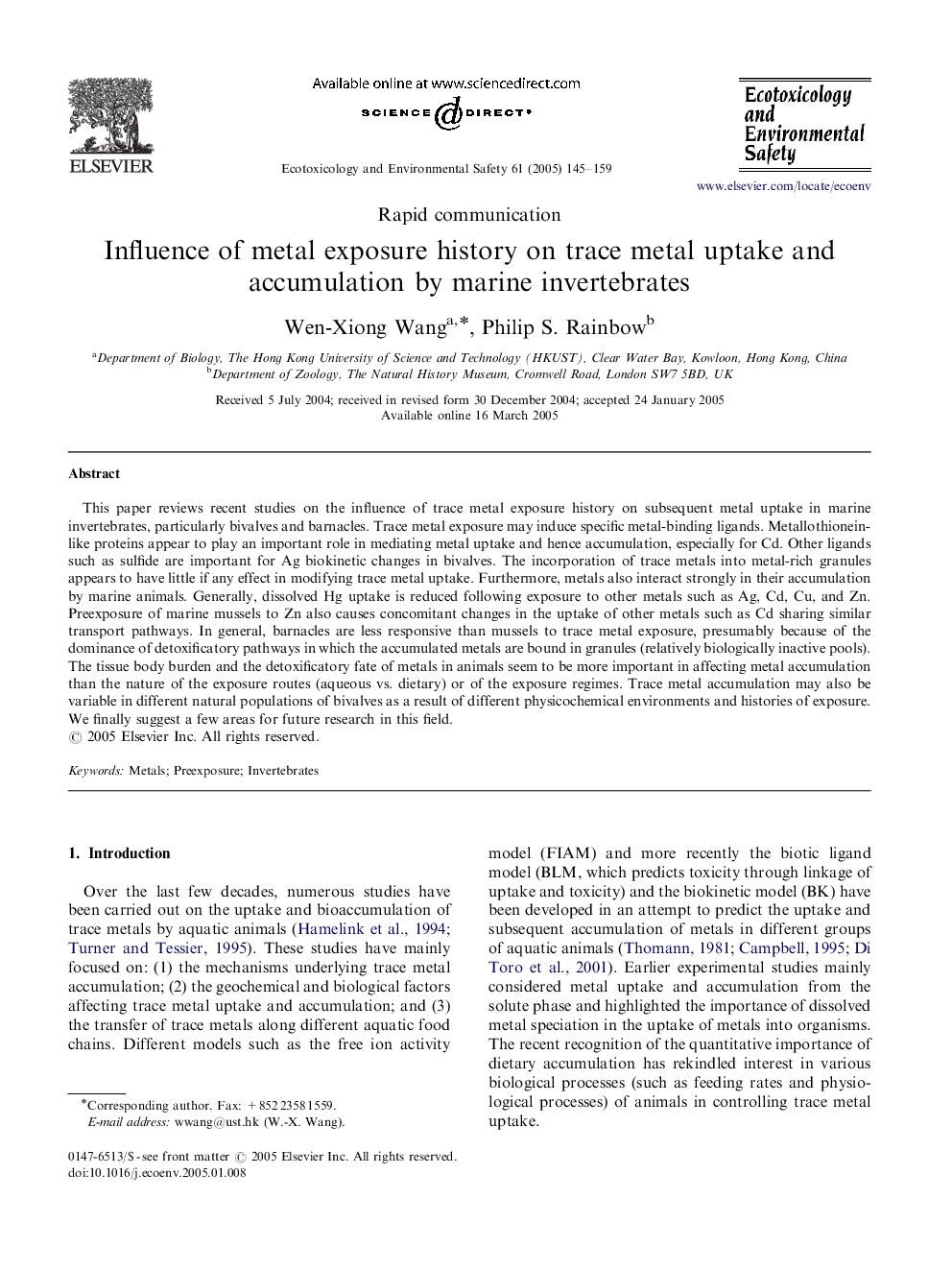| Article ID | Journal | Published Year | Pages | File Type |
|---|---|---|---|---|
| 9454853 | Ecotoxicology and Environmental Safety | 2005 | 15 Pages |
Abstract
This paper reviews recent studies on the influence of trace metal exposure history on subsequent metal uptake in marine invertebrates, particularly bivalves and barnacles. Trace metal exposure may induce specific metal-binding ligands. Metallothionein-like proteins appear to play an important role in mediating metal uptake and hence accumulation, especially for Cd. Other ligands such as sulfide are important for Ag biokinetic changes in bivalves. The incorporation of trace metals into metal-rich granules appears to have little if any effect in modifying trace metal uptake. Furthermore, metals also interact strongly in their accumulation by marine animals. Generally, dissolved Hg uptake is reduced following exposure to other metals such as Ag, Cd, Cu, and Zn. Preexposure of marine mussels to Zn also causes concomitant changes in the uptake of other metals such as Cd sharing similar transport pathways. In general, barnacles are less responsive than mussels to trace metal exposure, presumably because of the dominance of detoxificatory pathways in which the accumulated metals are bound in granules (relatively biologically inactive pools). The tissue body burden and the detoxificatory fate of metals in animals seem to be more important in affecting metal accumulation than the nature of the exposure routes (aqueous vs. dietary) or of the exposure regimes. Trace metal accumulation may also be variable in different natural populations of bivalves as a result of different physicochemical environments and histories of exposure. We finally suggest a few areas for future research in this field.
Keywords
Related Topics
Life Sciences
Environmental Science
Environmental Chemistry
Authors
Wen-Xiong Wang, Philip S. Rainbow,
